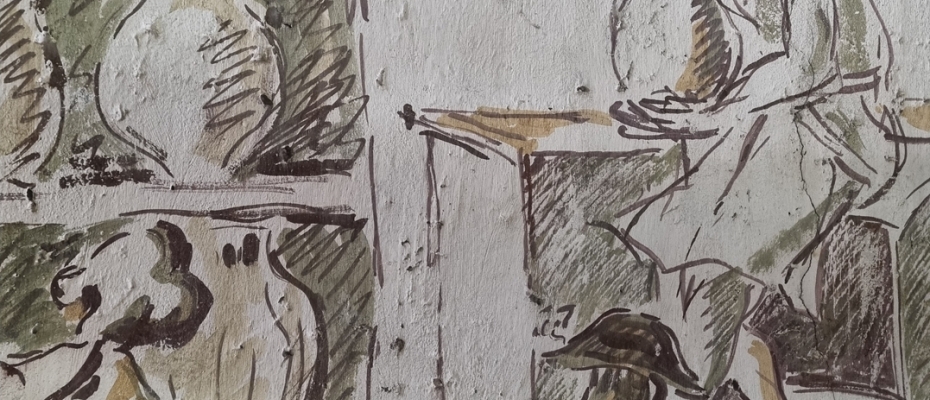Pompeo Pianezzola, the Early Years

When he first stepped through the doors of the Barettoni Manufactory, Pompeo Pianezzola was just fourteen years old.
No one, at that time, could have imagined the journey that would lead him to become one of the most significant voices in twentieth-century ceramic art. But Guglielmo Barettoni immediately sensed something: he recognized his talent, his discipline, his seriousness, the urgency of his drawing.
On May 1st, 1936, Pompeo was hired as an apprentice decorator.
They were intense years, marked by silent learning and constant observation, during which he absorbed the craft firsthand, working side by side with the artisans, immersed in the traditions and techniques of artistic ceramics.
Then he left. He studied, traveled, searched. And when he returned in 1945, he was twenty-four. He had grown, and with him his vision.
Guglielmo welcomed him back, but this time as a designer and artist. He gave him a studio of his own, a place where he could design and experiment.
He remained there until 1957.
Those were years of great freedom and bold experimentation. Pianezzola did not limit himself to decorating ceramics: he painted walls, created panels, portraits and paintings, shaped unique works, weaving his vision together with the great Venetian tradition.
His was a constant dialogue with the factory, with light, with architecture — a way of working that blended craftsmanship with intuition, skill with invention.
In those years, the Manufactory was also home for Pompeo: he lived in an apartment within the property.
He took part in the daily life of the Barettoni family, sharing meals, readings, conversations.
When Guglielmo welcomed guests — artists, writers, travelers — Pompeo was often invited to join. He listened, observed, engaged in dialogue. It was here that he first met Gio Ponti.
He was young, but attentive. Intelligent, curious.
Years later, walking through the rooms, the courtyards, and the barchesse of the Manufactory, one realizes that what Pompeo Pianezzola left behind is more than just a memory.
It is a diffused, unintentional exhibition, woven into spaces and daily gestures. His works are still there — on the walls, among the plates, along the stairways, within the majolica and frescoes — discreet yet constant presences, a living part of the factory.
When he created them, they were not conceived as museum pieces.
For him, they were work — work carried out with care, imagination, and rigor.
He was on the Manufactory’s payroll, designing decorations, panels, friezes.
And yet he did so with a breath that went beyond utility. He was an artist, but also a man of craft.
Perhaps this is why what he left is so powerful: it was born from an inner necessity, not from a celebratory intent.
Today, with the eyes of the present, those works speak to us differently.
They have become witnesses of a journey — tangible signs that, from the studio overlooking the garden, an artist set out who would leave a lasting mark on twentieth-century ceramics.
It was here that it began. And it was here he returned, time and again, even when his name had already spread elsewhere — in museums, exhibitions, catalogues.
But the time spent at the Manufactory was dear to him.
Here he had freedom. Here he found eyes that understood him.
And perhaps that is why so many of his traces remain.
Not to be preserved, but because they were part of the life of the place.
Today, we can read them as an exhibition.
Visits to the exhibition dedicated to the young Pompeo Pianezzola at the Manufactory are by appointment.

